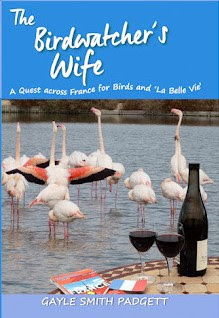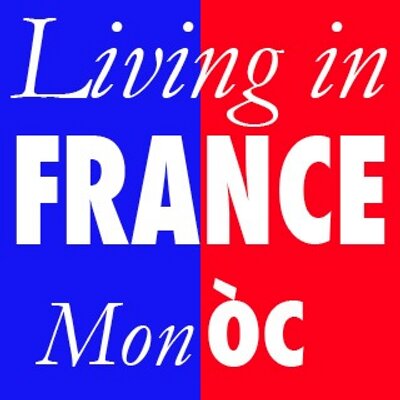*Note from Julie: If you're interested in Jewish history in France, check out Joan Nathan's wonderful book about Jewish food and cooking in France.
Monday, July 23, 2012
Guest Post: Ancient Jewish Site at Risk
Born
and raised in Pennsylvania, Sharon
deRham has a B.S.
and M.A. in Spanish Linguistics and has taught both Spanish and French.
An M.B.A. in Finance propelled her into the high-tech world of Silicon Valley,
where she worked at Hewlett-Packard and Cisco. She then studied food and wine
in France, Italy, Mexico, China, Vietnam and the Napa Valley. From 2001
to 2005, Sharon owned and operated Mostly French, an antique and pottery
shop in Calistoga (Napa Valley). She
now splits her time between Napa Valley and Vaison-la-Romaine, where she works as private guide specializing
in food, wine, and history tours of Provence for up to 15 people. Sharon recently hosted a group of 36 clients on a tour of ‘Jewish
Provence.’ Prior to the group’s arrival,
she did extensive research into the history of the Jews in the region, during
which she learned about the existence of a rarely visited ancient mikveh (ritual
bath) in the town of Pernes-les-Fontaines. I asked her for all the info and
this is what she sent...
Many visitors to Provence know that the
Roman Catholic Popes spent most of the 14th century in Avignon, in
order to escape the turmoil of Italy. Avignon did not belong to France but rather to the French King's uncle, who was a vassal of the Pope. And the area east and north of Avignon belonged not to France but to the Popes themselves, having been granted the territory
by the Count of Toulouse, upon a decree of the King of
France, Philippe
III, The Bold. Less well known is the fact that Jews who
were scattered about Provence and were expelled from France were welcomed into Avignon and the “Comtat Venaissin,” which belonged to the Pope, although they were subject
to many restrictions. (The Comtat
Venaissin refers to land east and north of Avignon which was given to the Pope in 1274;
it did not belong to France. “Comtat” means “county—formerly belonging to a
count; “Venaissin” refers to Venasque, the village where the Pope’s
representative lived. The Comtat Venaissin, along with Avignon, comprised the
Papal Territories until 1791, when the residents voted to become part of
France. Until this time these territories were an enclave inside France.)
''The Pope’s Jews’’ as they were known,
spoke a dialect called shuadit, a
mixture of Hebrew and Provençal. Today, one can find traces of the former Jewish
residents in many towns and villages in the area.
One stunning example of ancient Jewish
life in Provence is the “mikveh”—a
bath used for Jewish rituals—found about 15 years ago in the medieval town of Pernes-les-Fontaines,
about 20 km east of Avignon. It’s the only private mikveh in Provence and the
only one that can presently be visited. Mikvehs have existed in Judaism since the Jews came out of Egypt, and are
still an integral part of Jewish religious practice today, primarily for
purification of women at specific times of the month. Men bathe in the mikveh for spiritual reasons. The mikveh is also called a “cabussadou”
in the Provencal language, which has the same origin as the Spanish “cabeza”
(head.) Bathing in the mikveh requires
submersion to the top of one’s head. This particular mikveh was built in 1504
by the leader of the local Jewish community and is fed (to this day) by a
natural spring.
In the 17th century, a “hôtel particulier” (private
mansion) was built over the bath, and as is often the case, 17th-century
beams and frescoes were covered over in
subsequent renovations. They were only re-discovered when the current owners
were doing renovations. The house was almost torn down in the 1990s to build
low income housing but a local petition stopped the project. The mansion was
subsequently classified by the French government as a “monument historique.” The current owners have generously allowed the
local tourist office to escort visitors in to see the mikveh.
But we now risk losing this important
piece of French and Jewish heritage. The 9,000-square-foot home is for sale,
listed at €1.3 million (approximately $1.6 million), and the new owners may not
be as welcoming to visitors as the current owners are. (See the listing here.)
Ideally, the house should become a museum or community center, in order to
preserve this precious bit of history. The town does not have the funds to
purchase it, since they recently bought an ancient convent. Real estate
developers are eyeing the property with the intention of transforming it into
condos. So if anyone knows a philanthropic foundation that might step in to
help, now’s the time.
Pernes-les-Fontaines is famous for its 40
public fountains and many historic monuments. If you visit, the Tourist Office will
provide a map showing the trail of the fountains and a list of monuments. Officially,
visits to the mikveh are no longer being offered, but the Tourist Office still
has the keys and I’m told it’s possible that they’ll offer a few more tours.
Find them on the Place
Gabriel Moutte (next to Place Frederic Mistral, where you can park) in Pernes-les-Fontaines: 04 90 61 31 04 or 04 90 66 47 59, ot.pernes@wanadoo.fr or ville-pernes-les-fontaines.fr
For additional info on Jewish life in France during this time, you can also contact the Association Culturelle des Juifs du Pape at the Musée Juif Comtadin Rue Hébraïque in Cavaillon: 04 90 76 00 34 or email: acjp.org@free.fr
You might also be interested in the 11th Annual Jewish Music Festival of Carpentras, taking place August 5 to 11, 2012. It features a wide range of musical styles including Klezmer, Ladino, Sephardi, Judeo-Andalous, Hassidish and Choral. Concerts will be held in three venues: The 600-year-old Carpentras Synogogue, the Théâtre La Charité and the Cathédrale Saint-Siffrein. For more info on the festival contact the Carpentras Tourist Office (04 90 63 00 78) or go to: festival-musiques-juives-carpentras.com
Photos: Steps lead directly into the mikveh; it's fed by a natural spring and drains into the garden. The 17th-century ''hotel particulier'' built atop it is for sale, listed at €1.3 million. Julie Paturel from the Pernes-les-Fontaines Tourist Office leads a mikveh tour. Julie is the unofficial Jewish history expert at the Pernes Tourist Office and leads tours of the Jewish Quarter as well as historic Pernes. She can be reached directly at: guideot.pernes@orange.fr, 04 90 66, 47 59. The interior courtyard of the home and its stone-floored courtyard are both classified as a "monument historique." All photos (except top) by Sharon deRham.
*Note from Julie: If you're interested in Jewish history in France, check out Joan Nathan's wonderful book about Jewish food and cooking in France.
*Note from Julie: If you're interested in Jewish history in France, check out Joan Nathan's wonderful book about Jewish food and cooking in France.
Subscribe to:
Post Comments (Atom)





























































.jpg)













Sharon, what a gorgeous property and what an interesting and important history. It would be devastating if this property would be split up into apartments. It is unclear from the listing whether the interior has been fully renovated but the lack of interior photos tends to mean it's not. I assume therefore that this house needs a lot of investment and is too large to be a holiday home. It's fantastic that it has a good-sized garden as well. Based on all that I'd say that it would be best sold to someone who'd want to make in into a high-end chambres d'hotes (B&B, boutique hotel). Pernes les Fontaines is a beautiful village only 15 minutes from l'Isle sur la Sorgue and close to Avignon and many other places of interest and would be a perfect spot for such a small inn or hotel. The area is popular with the Dutch, Americans, Swiss, Belgians, English, and of course also the French. The owners might therefore want to list it on a website specialized in small hotels and chambres d'hotes for sale. It needs to get international exposure and your post is a great start for that! I'll also keep it in mind for my property finding clients. Good luck!
ReplyDeleteGreat article. I never did understand why that area was not a part of France.
ReplyDeleteNext time in Pernes I will try to visit the site
Is that true? I want to know more facts about this
ReplyDeleteThanks for contributing your important time to post such an interesting & useful collection.It would be knowledgeable & resources are always of great need to everyone. Please keep continue sharing.
ReplyDelete